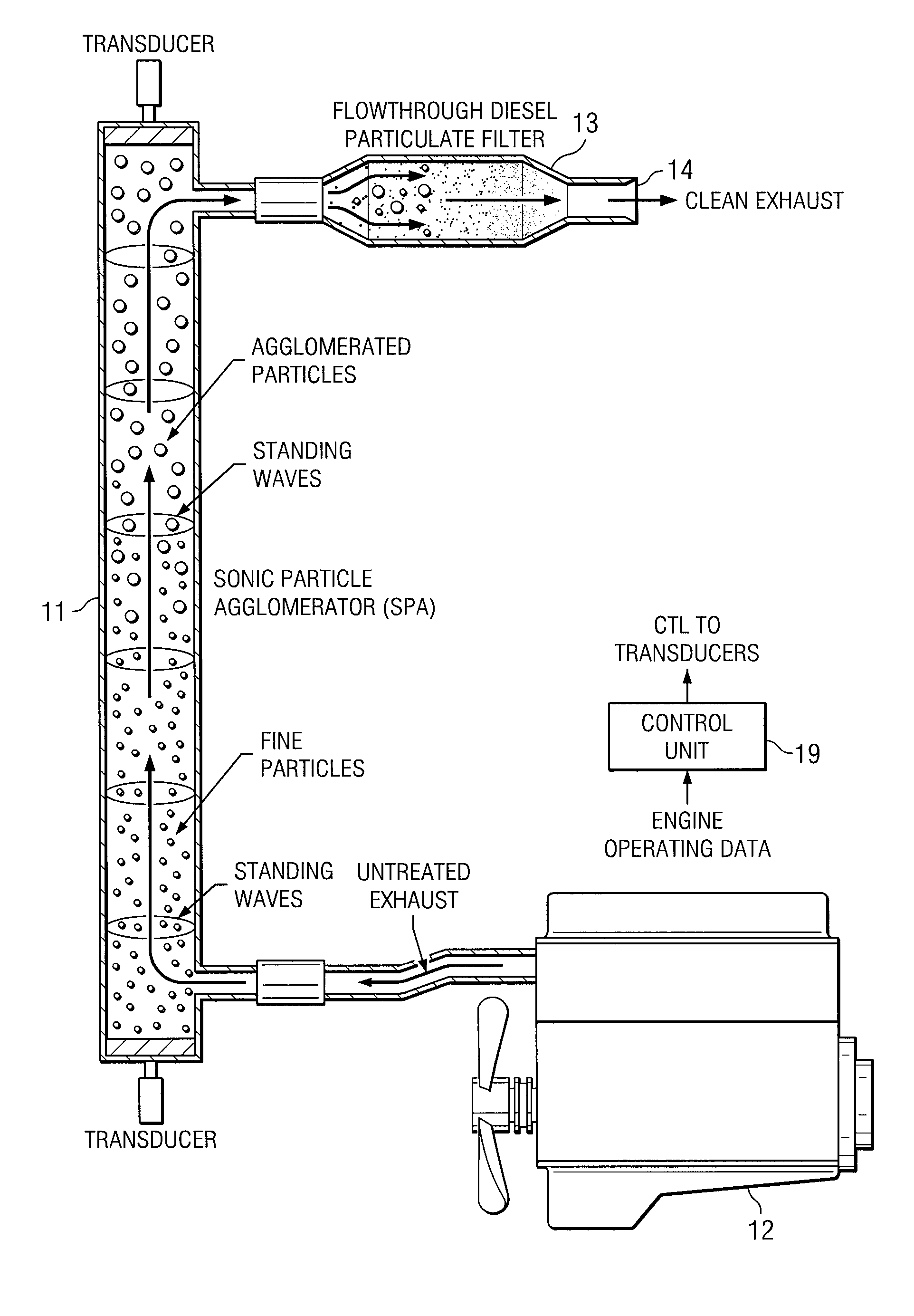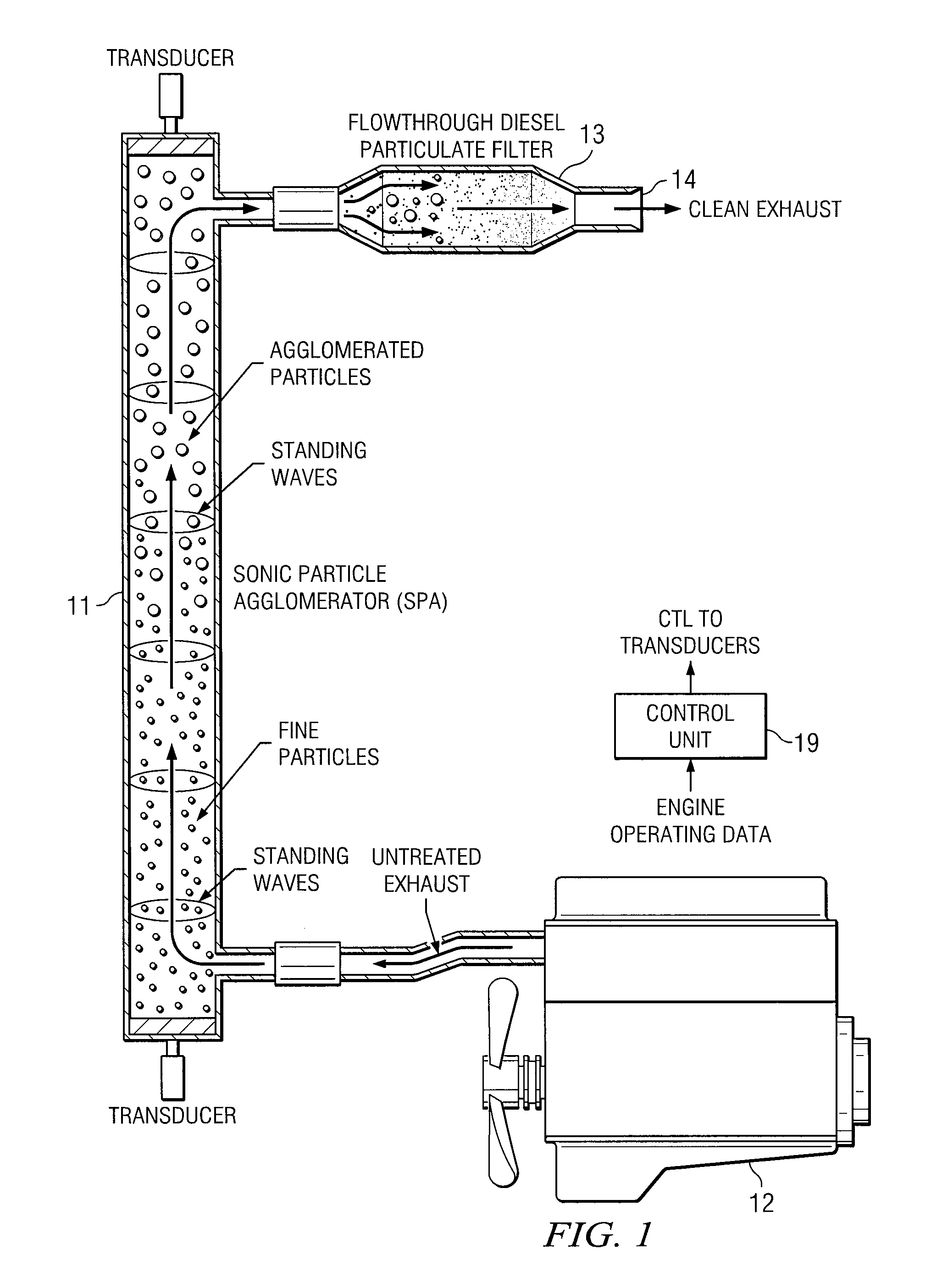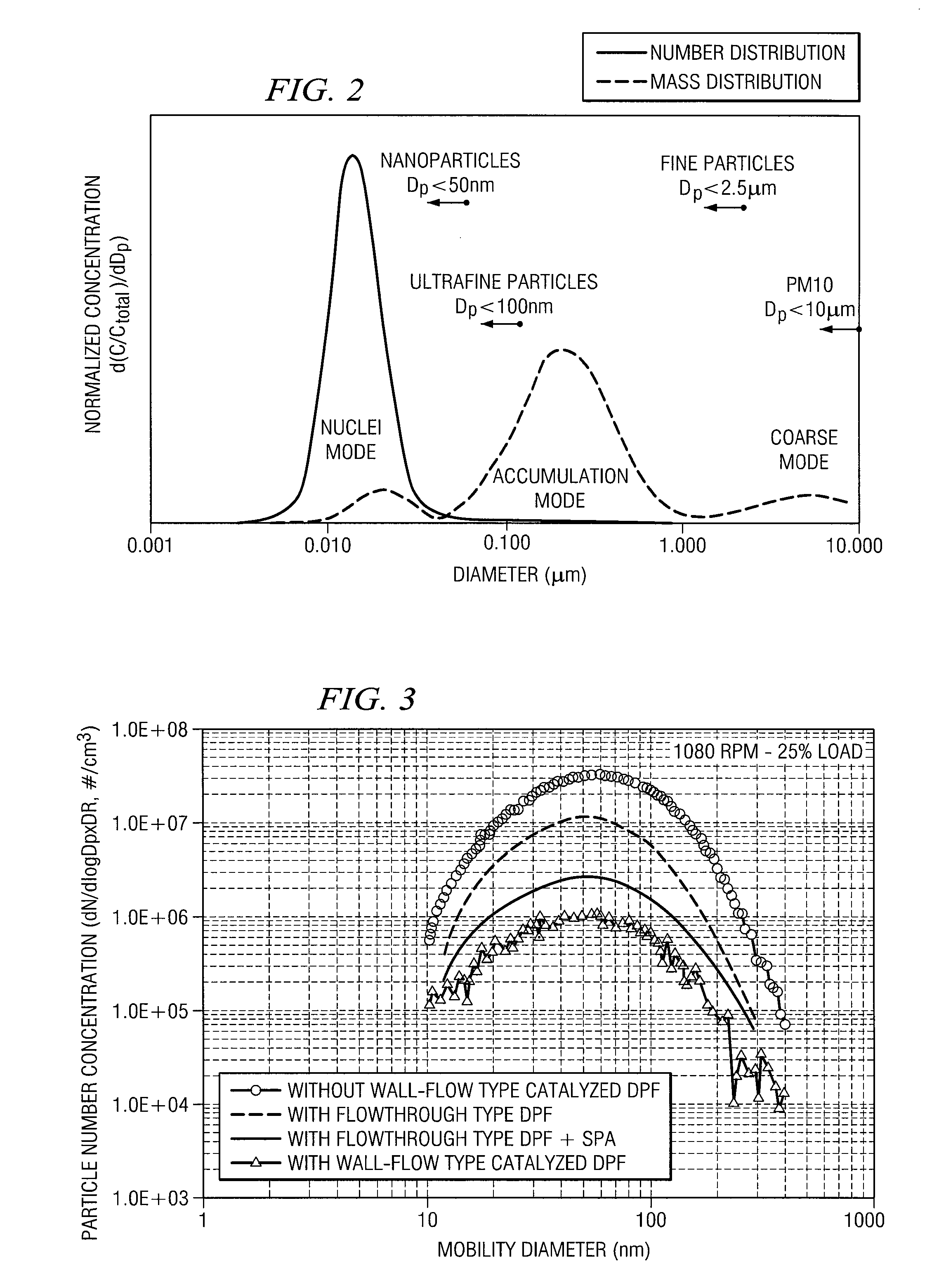Diesel Particulate Filter Performance Using Sonic Particle Agglomeration
a technology of sonic particle agglomeration and diesel engine, which is applied in the direction of liquid degasification, auxillary pretreatment, separation process, etc., can solve the problems of low gaseous emissions of unburned hydrocarbon and carbon monoxide, the in-cylinder design changes have not been able to meet the emission limits of these engines, and the engine is currently subject to strict emission limits
- Summary
- Abstract
- Description
- Claims
- Application Information
AI Technical Summary
Benefits of technology
Problems solved by technology
Method used
Image
Examples
Embodiment Construction
[0010] As stated in the Background, an advantage of flowthrough diesel particulate filters (DPF's) is their low back pressure characteristic. This characteristic is a result of the fact that DPF's cause less restriction to engine exhaust. It follows that they do not present the same adverse impact on engine performance or fuel economy as do wallflow DPF's.
[0011] On the other hand, the filtration efficiency of flowthrough DPF's is rather low (about 50 percent). This fact has limited the application of flowthrough DPF's to either retrofit applications or to vehicles that must meet only less stringent European particulate emissions standards.
[0012] To meet European standards, it is customary for engine manufacturers to advance injection timing. This increases engine-out nitric oxide emissions, but reduces engine-out particulate matter emissions. The reductions in particulate emissions are usually sufficient to allow the use of flowthrough DPF's despite their reduced efficiency. Incre...
PUM
| Property | Measurement | Unit |
|---|---|---|
| Length | aaaaa | aaaaa |
| Mechanical properties | aaaaa | aaaaa |
| Power consumption | aaaaa | aaaaa |
Abstract
Description
Claims
Application Information
 Login to View More
Login to View More - R&D
- Intellectual Property
- Life Sciences
- Materials
- Tech Scout
- Unparalleled Data Quality
- Higher Quality Content
- 60% Fewer Hallucinations
Browse by: Latest US Patents, China's latest patents, Technical Efficacy Thesaurus, Application Domain, Technology Topic, Popular Technical Reports.
© 2025 PatSnap. All rights reserved.Legal|Privacy policy|Modern Slavery Act Transparency Statement|Sitemap|About US| Contact US: help@patsnap.com



